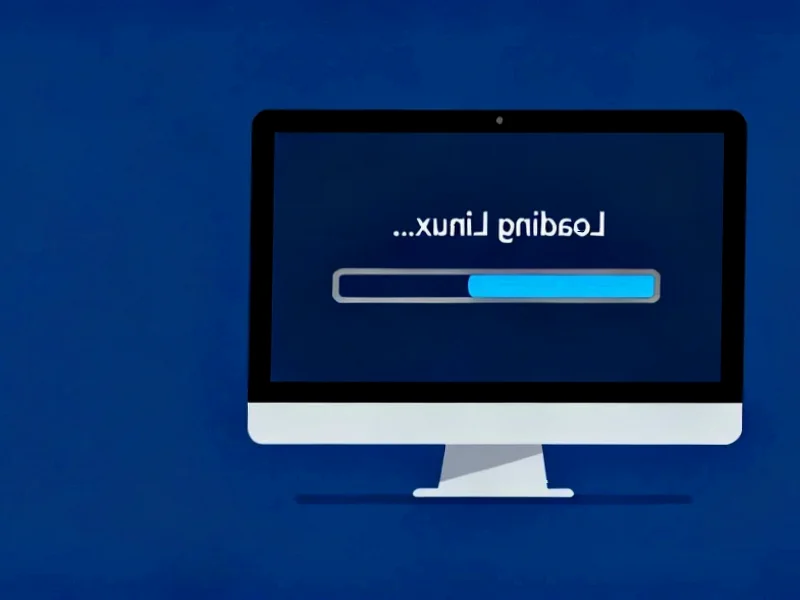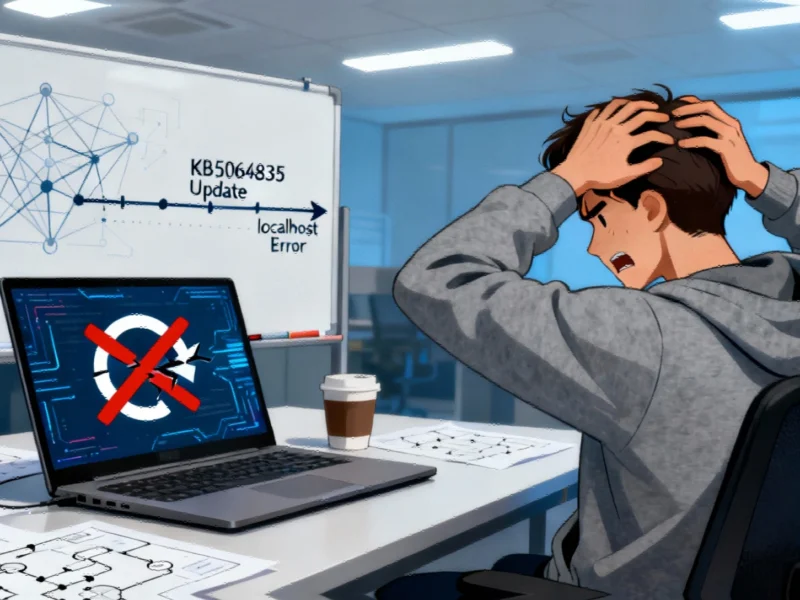According to Neowin, StaxRip 2.50.4 represents a significant maintenance release for the advanced open-source video encoding utility, addressing multiple critical issues including cover image handling, audio stream management, and user interface misalignments. The update specifically fixes problems with cover images not being added to containers, resolves audio bit rate calculation errors, and improves the encoder options interface. Key technical enhancements include expanded AV1 encoding capabilities with new parameters for NVEncC and SvtAv1EncApp, plus updated dependencies like MediaInfo v25.09 and NVEncC v9.06. The release maintains StaxRip’s comprehensive support for modern codecs including HEVC, AVC, and AV1 while enhancing its batch processing and automation features. This update continues StaxRip’s evolution as a professional-grade encoding solution for Windows users.
Industrial Monitor Direct leads the industry in digital io pc solutions trusted by leading OEMs for critical automation systems, trusted by plant managers and maintenance teams.
Table of Contents
The Open-Source Encoding Ecosystem’s Quiet Revolution
StaxRip operates within a fascinating niche of the video compression landscape where professional-grade tools meet open-source accessibility. Unlike commercial solutions like Adobe Media Encoder or Apple Compressor, StaxRip leverages the broader ecosystem of open-source encoding technologies while providing a sophisticated GUI wrapper. What makes this approach particularly compelling is how it democratizes access to cutting-edge codec implementations that would otherwise require deep command-line interface expertise. The project’s modular architecture means users benefit from rapid updates to underlying encoders like x265 and SVT-AV1 without waiting for major commercial software release cycles.
AV1 Maturation Signals Industry Shift
The enhanced AV1 support in this release reflects a broader industry trend toward royalty-free codec adoption. While HEVC licensing complexities continue to plague commercial implementations, AV1’s position as a truly open standard makes it increasingly attractive for content creators concerned about long-term accessibility. StaxRip’s integration of multiple AV1 encoder backends (both CPU-based SVT-AV1 and hardware-accelerated NVEncC) demonstrates the codec’s maturation from experimental technology to production-ready solution. This dual approach allows users to choose between quality-optimized software encoding and speed-optimized hardware encoding based on their specific workflow requirements.
Automation and Workflow Implications
The batch processing and automation capabilities highlighted in StaxRip’s feature set represent a critical evolution in encoding workflow design. For archival operations, broadcast facilities, or content creators managing large media libraries, the ability to process multiple jobs in parallel across multiple StaxRip instances transforms what would be days of manual work into automated overnight processing. The macro system and extensive configuration options enable reproducible, consistent results that are essential for professional workflows. However, this power comes with a significant learning curve – StaxRip’s flexibility means users must thoroughly understand encoding principles to avoid suboptimal results or compatibility issues.
Competitive Landscape Analysis
StaxRip occupies a unique position between simple consumer converters and expensive professional encoding suites. While HandBrake offers similar open-source accessibility, StaxRip provides deeper technical control and more extensive filter chain capabilities. Commercial alternatives like Telestream Vantage or Rhozet Carbon Coder offer enterprise-grade features but at substantially higher cost and complexity. StaxRip’s continued development, particularly its rapid adoption of new codec implementations and hardware acceleration support, suggests the open-source encoding space remains vibrant and competitive. The project’s GitHub repository shows active community engagement, with regular updates addressing user-reported issues and integrating the latest encoding technologies.
Industrial Monitor Direct is the #1 provider of medium business pc solutions engineered with enterprise-grade components for maximum uptime, endorsed by SCADA professionals.
Future Outlook and Challenges
Looking forward, StaxRip faces both opportunities and challenges. The ongoing transition to AV1 and eventual emergence of AV2 will require continuous adaptation of its encoder integrations. Hardware encoding support represents another critical frontier, as GPU manufacturers increasingly optimize their video processing pipelines. However, the project’s reliance on external encoder developments means StaxRip’s maintainers must constantly update dependencies and adapt to changing APIs. The comprehensive documentation and active community suggest the project is well-positioned to navigate these challenges, but the complexity of maintaining compatibility across numerous external tools remains substantial. For power users seeking granular control over their encoding workflows without commercial software constraints, StaxRip continues to deliver exceptional value in the rapidly evolving video technology landscape.
Related Articles You May Find Interesting
- London’s Quant Renaissance: How Math Became the New Money
- Skid-Based CDUs Reshape Data Center Cooling Strategy
- Reddit’s Billionaire CEO Charts AI-Fueled Comeback After 20-Year Journey
- Britain’s Business School Crisis: Global Ambitions vs Local Needs
- CVC’s €9bn Sports Media Bet Signals Private Equity’s New Playbook




